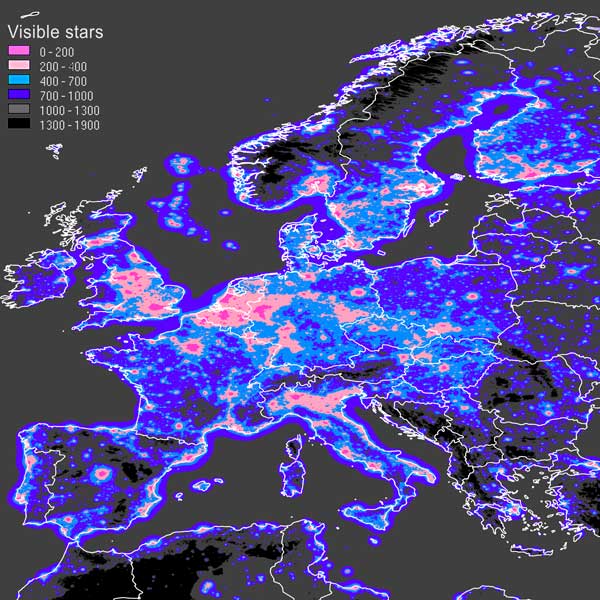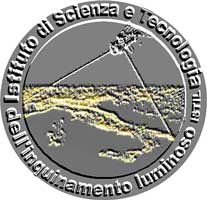Istituto di Scienza e Tecnologia dell'Inquinamento Luminoso
Light Pollution Science and Technology Institute
The night sky in the WorldSatellite monitoring of the artificial night sky brightness and the stellar visibility |
Maps of the number of visible stars
The maps of the number of visible stars show how many stars are visible in the sky. They are obtained from the maps of the naked eye limiting magnitude. The limiting magnitude can be related to the number of star which are visible in the sky but a detailed computation requires an evaluation of the stellar visibility in each direction of the sky and not only at the zenith, accounting for the increase of the stellar extinction with the zenith distance. This requires an incredible amount of computational time. This kind of maps are still in progress. Here below a preliminary version.

Preliminary map of the number of visible stars in Europe. Copyright Cinzano/ISTIL 2005
Maps of the loss of visible stars
The maps of the loss of visible stars are simply obtained by difference between the map of the number of visible stars and a map of the same quantity evaluated assuming no light pollution in the area. Like the maps of the loss of naked eye limiting magnitude, these maps shows better the effects of the light pollution but are less useful to evaluate the capability of the population to see the stars than the maps of the number of visible stars.
